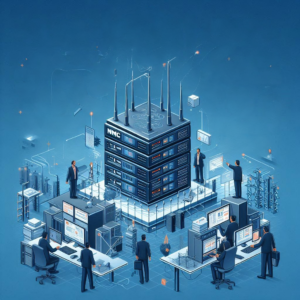With an overwhelming amount of IT advice available online—much of it AI-generated—businesses now face a new challenge: How do you determine which advice will work for you?
In this first article of a series, I’ll share practical approaches that have worked for my customers, along with real-world tips to help make informed IT decisions.
Cutting IT Costs Without Compromising Quality: Leverage Cloud Services
Moving to the cloud can significantly reduce the need for costly hardware and maintenance. It allows businesses to scale their IT resources up or down as needed, ensuring they only pay for what they use. However, before making the move, it’s crucial to accurately assess your current IT costs and projected cloud expenses—inaccurate ROI calculations often lead to unexpected costs!
Using Cloud TCO and ROI Calculators
Many Total Cost of Ownership (TCO) and Return on Investment (ROI) calculators are available to estimate cloud costs, including tools from major providers like AWS and Azure. Using these tools is essential, but keep in mind:
- Factor in both actual current costs and the value of previous IT investments (e.g., server maintenance costs still apply even if servers are fully depreciated).
- Determine whether your existing hardware can still meet growth and reliability needs. If upgrades were inevitable, those costs should be accounted for in your cloud transition plan.
Potential Savings from Moving to the Cloud
- Eliminate hardware purchases (servers, storage, network devices).
- Lower energy bills, including cooling costs (assuming old equipment is decommissioned).
- Reduce hardware maintenance costs.
- Free up expensive data center or hosting space.
- Right-size cloud resources with flexible scaling, ensuring unused resources are decommissioned to prevent unnecessary charges.
Additional Costs to Consider
While cloud adoption can lower costs, there are additional expenses to account for:
- Data migration costs – This is also an opportunity to reduce technical debt by upgrading to the latest cloud-based software versions.
- New cloud expertise – Businesses may need to hire cloud engineers and security experts or invest in employee training.
- Data retrieval fees – Cloud providers charge for pulling data from storage, which can add up over time.
- Tiered storage considerations – Long-term storage may be cheaper, but performance trade-offs should be assessed.
Costs That Remain Unchanged
- Internet connectivity – Assuming your current bandwidth is sufficient.
- Software licensing – Licensing models may change, but costs still exist.
- IT personnel – Cloud adoption shifts responsibilities, but IT staff are still essential.
- Peripherals – Printers, scanners, and other hardware remain necessary.
Final Thoughts
A comprehensive and realistic TCO and ROI analysis is critical to ensuring cloud adoption delivers real savings. Without careful planning, businesses risk overspending rather than saving.













